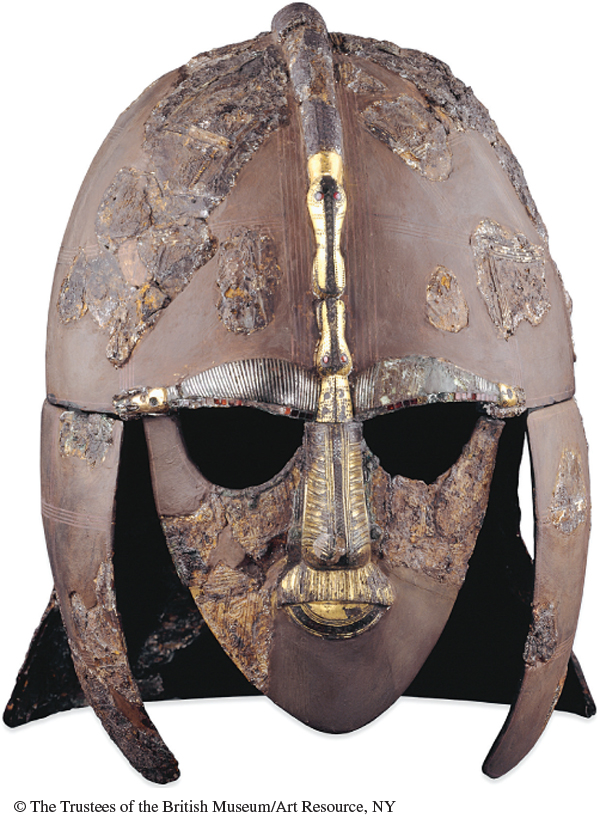Celtic and Germanic People in Gaul and Britain
The Celts present a good example of both assimilation and conflict. Celtic-speaking peoples had lived in central Europe since at least the fifth century B.C.E. and spread out from there to the Iberian Peninsula in the west, Hungary in the east, and the British Isles in the north. As Julius Caesar advanced northward into what he termed Gaul (present-day France) between 58 and 50 B.C.E. (see Chapter 5), he defeated many Celtic tribes. Celtic peoples conquered by the Romans often assimilated Roman ways, adapting the Latin language and other aspects of Roman culture. In Roman Gaul and then in Roman Britain, towns were planned in the Roman fashion, with temples, public baths, theaters, and amphitheaters. In the countryside large manors controlled the surrounding lands. Roman merchants brought Eastern luxury goods and Eastern religions — including Christianity. The Romans suppressed the Celtic chieftains, and a military aristocracy made up of Romans — some of whom intermarried with Celtic families — governed. In the course of the second and third centuries, many Celts became Roman citizens and joined the Roman army. Celtic culture survived only in areas beyond the borders of the empire. (The modern Welsh, Bretons, Scots, and Irish are all peoples of Celtic descent.)
By the fourth century C.E. Gaul and Britain were under pressure from Germanic groups moving westward, and Rome itself was threatened (see Map 7.3). Imperial troops withdrew from Britain in order to defend Rome, and the Picts from Scotland and the Scots from Ireland (both Celtic-speaking peoples) invaded territory held by the Britons. According to the eighth-century historian Bede (beed), the Briton king Vortigern invited the Saxons from Denmark to help him against his rivals. However, Saxons and other Germanic tribes from the area of modern-day Norway, Sweden, and Denmark turned from assistance to conquest. Their goal was plunder, and at first their invasions led to no permanent settlements. As more Germanic peoples arrived, however, they took over the best lands and eventually conquered most of Britain. Historians have labeled the years 500 to 1066 (the year of the Norman Conquest) the Anglo-Saxon period of English history, after the two largest Germanic groups in England, the Angles and the Saxons.

Anglo-Saxon Helmet This ceremonial bronze helmet from seventh-century England was found inside a ship buried at Sutton Hoo. The nearly 100-foot-long ship was dragged overland before being buried completely. It held one body and many grave goods, including swords, gold buckles, and silver bowls made in Byzantium. The unidentified person who was buried here was clearly wealthy and powerful.
(© The Trustees of the British Museum/Art Resource, NY)
Anglo-Saxon England was divided along ethnic and political lines. The Germanic kingdoms in the south, east, and center were opposed by the Britons in the west, who wanted to get rid of the invaders. The Anglo-Saxon kingdoms also fought among themselves, causing boundaries to shift constantly. Finally, in the ninth century, under pressure from the Viking invasions, King Alfred of Wessex (r. 871–899) created a more unified state with a reorganized army and system of fortresses for defense.
The Anglo-Saxon invasion gave rise to a rich body of Celtic mythology, particularly legends about King Arthur, who first appeared in Welsh poetry in the sixth century and later in histories, epics, and saints’ lives. Most scholars see Arthur as a composite figure that evolved over the centuries in songs and stories. In their earliest form as Welsh poems, the Arthurian legends may represent Celtic hostility to Anglo-Saxon invaders, but they later came to be more important as representations of the ideal of medieval knightly chivalry and as compelling stories whose retelling has continued to the present.
